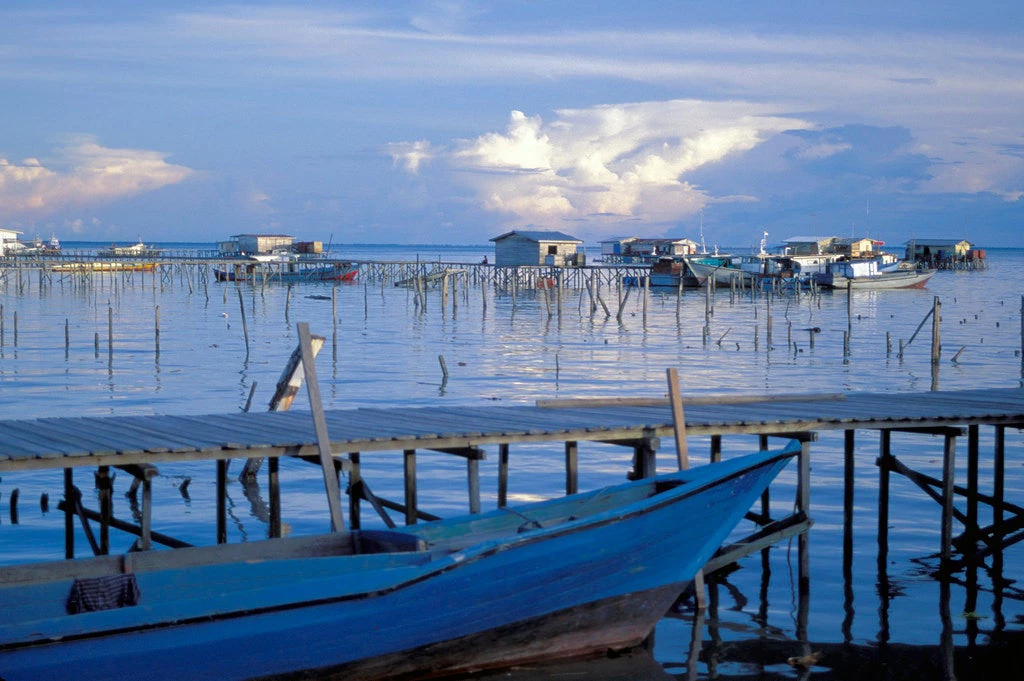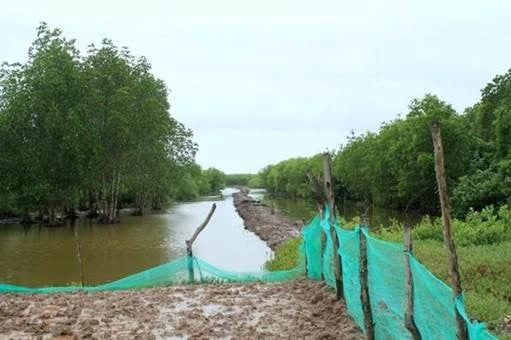
Sea level is rising, and the rise in sea level will continue beyond the year 2100, even if greenhouse gas emissions are stabilized today. Expected to rise by at least one meter during this century according to the current scientific consensus, sea levels may even rise by three meters by 2100, in light of the new evidence on ice-cliff instability of the Antarctic.
| For new evidence on ice-cliff instability of the Antarctic and its implications for the magnitude and time-phasing of global sea-level rise, see https://www.nature.com/articles/nature17145 http://www.nature.com/news/antarctic-model-raises-prospect-of-unstoppable-ice-collapse-1.19638 https://climatefeedback.org/evaluation/antarctica-doomsday-glaciers-could-flood-coastal-cities-grist-eric-holthaus/ |
| Dangers of sea-level rise include but are not limited to:
|
Tens of millions of coastal inhabitants of East Asia and the Pacific must prepare for sea-level rise
All island nations and countries with heavy concentrations of population and economic activity in low-lying coastal regions are vulnerable to sea-level rise, including in the East Asia and Pacific region.
A World Bank study identified coastal areas with low elevation, and assessed the probable consequences of continued sea-level rise for eighty-four developing countries, using satellite maps of the world overlaid with data on population growth (assuming that the current locational distribution is unchanged). Including twelve countries – Brunei, Cambodia, China, Indonesia, D.P.R Korea, Republic of Korea, Malaysia, Myanmar, Papua New Guinea, Philippines, Thailand and Vietnam – the study’s findings indicate that the impact of sea-level rise will be particularly severe for this region.
Overall, an area of approximately 74,000 square kilometers in the twelve countries would risk permanent inundation by a one-meter sea level rise. A three-meter rise would enlarge the inundated area to 178,000 square kilometers – or larger than peninsular Malaysia. Even more sobering is the potential impact of communities. A one-meter rise may displace approximately 37 million people, and the number of vulnerable would increase to 60 million people with a two- meter rise. A three-meter rise can impact 90 million people – nearly equivalent to the population of Vietnam, the fourth most populated country in East Asia.
Not all countries in the East Asia and Pacific region are equally vulnerable
China and Indonesia are the two countries most vulnerable to permanent inundation.
More than 32,000 square kilometers of China’s coastal area – and more than 23 million people – are at risk, if sea levels rise by one meter. With a three-meter rise, these estimates would increase to more than 71,000 square kilometers and 52 million people.
In Indonesia, a one-meter rise would inundate more than 13,800 square kilometers and may displace 2.8 million people. The figures multiple to 35,090 square kilometers and 5.1 million people, if sea levels climb to three meters.
Island nations are the most vulnerable, but so are the communities of the low-lying Mekong and Red River Deltas. Some 11 percent of Vietnam’s population would face inundation risk if sea levels rise by one meter, and the ratio climbs to an alarming 26 percent if sea levels rise by three meters.

Sea level rise will also intensify inundation from storm surges in cyclone-prone East Asia and the Pacific
Cyclones – to which many countries in the region are vulnerable – will be more devastating.
Inundation from cyclonic storm surges will intensify, as sea level rise will both elevate surges and reduce coastal protection from the loss of mangroves. Bigger storm surges threaten greater destruction, as surges move further inland and overwhelm larger areas.
Our research findings are alarming. One study that looked at the risk of storm surge inundation of 393 coastal cities in 31 developing countries identified Manila, Jakarta, Bangkok, Ho Chi Minh City, Yangon, Surabaya, Makassar, and six other cities in the Philippines as among the top 25 cities that may face cyclones with more devastating force.
The other study projected that the loss of mangroves in China, Thailand, Indonesia, Vietnam, Myanmar, Papua New Guinea, Micronesia, Palau, Solomon Islands, and Fiji, heightens the countries’ vulnerability to cyclones – and catastrophic losses of lives, property, habitat, and infrastructure.
Individualize preparations for increased risks
Risks for individual countries will differ in magnitude and time-phasing, however. Adaptation measures, including the building of sea walls and plantation of mangroves, must be location specific. Effective management will require detailed knowledge of impacted ecosystems, coastal assets, and communities, as well as an understanding of their responses to sea level rise (including cyclones and salinization). Also important is resilience planning that anticipates the future reactions of communities as sea levels rise. The abovementioned World Bank reports help create opportunities for identification of the most vulnerable countries and better targeting of resources.
Recently, the South Asia region has conducted multiple technical studies in Bangladesh to understand the spatial and temporal variations in cyclonic storm impacts, the role of mangroves along with embankments to protect coastal areas from storm surges, the impacts of progressive salinization on agriculture, as well as the impact on mangrove species, fresh water fish habitats, and livelihoods of coastal communities. These technical studies, which also outlines the economics of adaptation measures, are providing inputs to several ongoing initiatives in coastal area management beyond Bangladesh.
To help the East Asia and Pacific region strengthen resilience against sea level rise, similar studies can be carried out, especially in the region’s more vulnerable countries, to develop climate-smart policies and investments. Sea levels may be rising, but more informed responses can also increase.


Join the Conversation